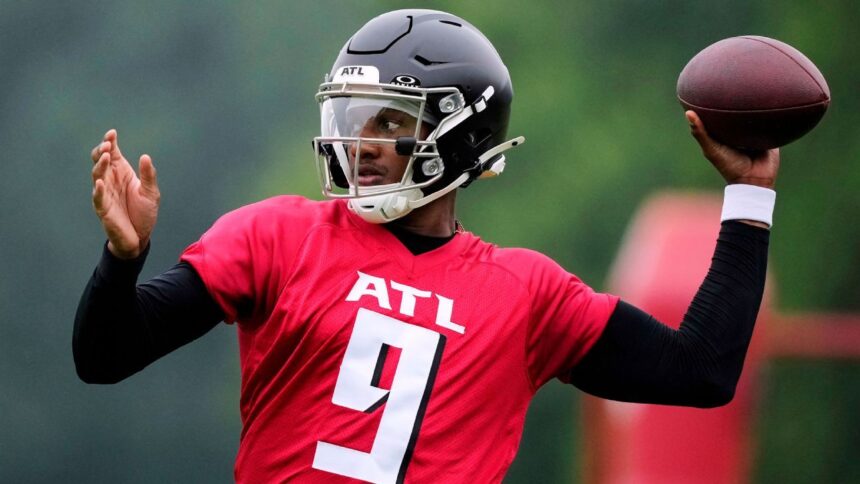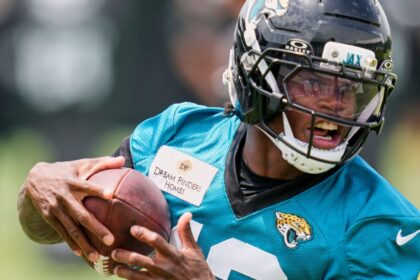Deep Dive into Second-Year Quarterbacks: Who Will Make the Leap?
Summer is the perfect time to analyze the performance of last season’s rookies. On this occasion, we focus on the 2024 quarterback class, a group that promises a lot and has already made its mark on the league. With five of the six quarterbacks selected in the first round seeing action, and all of them with fascinating stories, the second year is crucial.
Will
Jayden Daniels be able to maintain or even improve upon his outstanding season? How will
Caleb Williams look without the shadow of the Matt Eberflus era? What do Michael Penix Jr.’s three starts tell us about his sudden rise to QB1 in Atlanta?
This class, which also includes
Drake Maye,
Bo Nix, and
J.J. McCarthy among the top twelve picks, is compared to the 2018 class, which gave us
Josh Allen,
Lamar Jackson, and
Baker Mayfield. Williams, Daniels, Maye, and Nix showed potential to be long-term starters, while Penix and McCarthy have reasons to be optimistic.
Next, we will analyze each of these quarterbacks, posing a key question for each and seeking answers.
Caleb Williams: Is It Time to Worry?
It is essential to remember that Caleb Williams demonstrated his talent. To illustrate, let’s look at this play on third down and 14 yards against the Lions.This release is extremely difficult. To achieve it, remarkable speed and precision are required while running to the left. These types of plays are exceptional.
It’s important to note that many first-round quarterbacks have had difficult rookie seasons, with varied results in their careers.
Williams, among the 40 quarterbacks with at least 200 pass attempts last season, ranked 33rd in completion percentage, 30th in EPA per attempt, and 32nd in adjusted net yards per attempt. His 21% batted pass rate and 10% sack rate were also concerning.
Compared to other rookie seasons, Williams didn’t do so badly. Of the 46 first-round quarterbacks with at least 200 pass attempts in the last 20 years, Williams ranked below average in some metrics, but his sack rate was high, and his deflected pass rate was closer to average.
While it’s easy to be alarmed after Williams’ rookie season, there’s no reason to panic. There are problems, but there’s also potential.
The comparison to Bryce Young is useful. Both suffered many sacks, avoided long throws, and relied on runs to make up for their deficiencies.
There are impressive plays by Williams, such as the throw to D’Andre Swift against the Vikings, the pass to Rome Odunze in the last quarter against the Packers, and the throw against the Commanders. The talent that led him to be the number one pick is still present.
A significant improvement is anticipated in his second year. If Young can improve with a better offensive line and a competent coaching staff, Williams can do the same. The new coach, Ben Johnson, and offensive coordinator, Declan Doyle, will need to implement simple tactics to improve the Bears’ offense.
Williams’ biggest challenge will be to reduce his sack rate. He led the league in pressure, and although his pressure rate was average, he was sacked on 30% of his pressures. This is something he must improve. While the interception rate remains low, he will produce a good number of positive plays. There is no need to panic.
Jayden Daniels: What to Expect?
What else can be said about Daniels? Among rookie quarterback seasons in the last 20 years (minimum 200 pass attempts), Daniels ranked third in completion percentage and sixth in EPA per play. He set a rushing yards record for a rookie with 891. His ability to run is exceptional.
One of Daniels’ best qualities is his agility in the protection pocket. He is one of the most dangerous athletes in the league. His speed is unique, and his ability to escape defenses is impressive.Daniels picks the perfect moment to run. He ran on 11.8% of his pass attempts, the seventh-highest rate since 2000, and on 24.7% of his attempts under pressure, the highest since 2000. His ability to run is not a product of poor pocket management, but of his ability to extend plays.
When Daniels attempts a pass under pressure, he excels. He ranked fourth in yards per attempt, sixth in deflected pass rate, seventh in yards per play, and fifth in adjusted net yards per attempt. He was one of the best passers under pressure.
His intelligence in the game is also remarkable. On third and six against the Buccaneers, he changed the protection at the line of scrimmage, anticipating an aggressive coverage and securing a pass to Terry McLaurin. This type of decision demonstrates the maturity of a veteran.
Daniels is likely to regress in some metrics. However, his performance should not be discounted. The rib injury he suffered against the Panthers affected his game. Avoiding injuries should be his priority.
Drake Maye: Will He Be Able to Get Help?
The Patriots’ offense was poor last season. Maye had the worst offensive line of the rookie quarterbacks. He had more quick pressure than any other passer, and his pressure rate of 37.3% was only surpassed by Deshaun Watson.
The line’s performance in the running game was also poor. The running backs averaged 4.0 yards per carry, but only 3.7 expected yards per carry. The quarterback runs were excellent. Maye ran on 10.8% of his pass attempts, and his 9.0 yards per run surpassed Daniels’.
Maye had difficulty generating long plays through the air. He was efficient, but his explosive play rate was low. Not only were the Patriots unable to protect Maye, but they also didn’t have receivers who could make long plays. Most of his passes were short.
Many of Maye’s plays looked like this against Houston. The play should have been a short pass, but Maye saw the coverage and ran for 15 yards.Maye makes quick decisions and has a great sense of improvisation. He has the potential to be a good starter in the league. It will depend on other factors, such as the new offensive coordinator and the improvement of the offensive line.
Michael Penix Jr.: Do We Really Know Him?
Penix had ups and downs in his three starts at the end of the 2024 season. It was to be expected for a rookie. Young players improve dramatically in their first games. The best of Penix showed a quarterback with the time, talent, and audacity to carry out coordinator Zac Robinson’s Sean McVay-inspired offense.
Penix also has an understanding of the game. He can identify an advantageous matchup for Bijan Robinson before the snap and quickly hand him the ball. There is clear evidence of understanding and feeling.
A good example is on third and six against the Giants, where Penix identified Darnell Mooney’s slant and made a quick and accurate throw.
The selection of throws will be something important to observe in his second year. Penix threw long passes frequently. The quick throws didn’t go to the short zones, but to one-on-one opportunities on the field.









